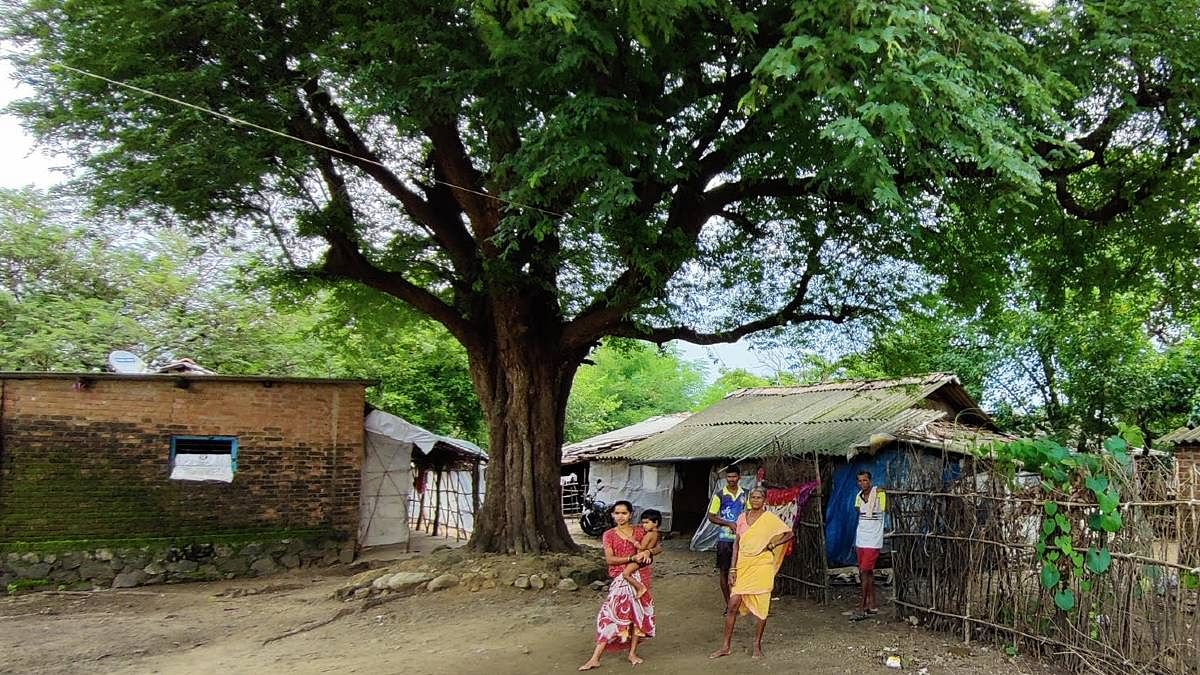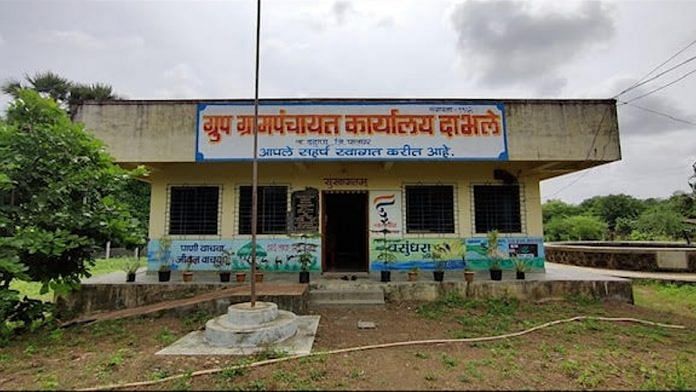Mumbai: The lush green Dabhale village, with its narrow winding roads, was among the many in Maharashtra’s Palghar district that were opposed to the Modi government’s showpiece Mumbai-Ahmedabad bullet train project, launched by Prime Minister Narendra Modi in 2017.
However, in November 2021, the gram panchayat of the village passed a formal resolution in favour of the project and gave a letter of support for land acquisition.
Dabhale is among several villages that have come around over the past two years in a district that was perhaps the most stiffly opposed to the bullet train project.
There has been slow but steady progress in private land acquisition for the Rs 1.1 lakh crore project over the past two years in Maharashtra. This, despite opposition to the project by the Shiv Sena, which has termed it an “unnecessary” expense to benefit Gujarati businessmen, and tribal groups in Palghar and Thane.
The National High Speed Rail Corporation Limited (NHSRCL), the implementing authority of the 508-km line, has acquired almost 99 per cent of the land it requires in Gujarat, 100 per cent in the Union territory of Dadra and Nagar Haveli and Daman and Diu, and 71 per cent in Maharashtra, according to data shared by the corporation with ThePrint.
Within Maharashtra, the NHRSCL requires the largest land parcel in Palghar, where approximately 30 per cent of the population is tribal (Census 2011).
The district authorities say the grievances of residents regarding the project have been tackled as part of a sustained effort to reach out. While some residents allege they were not completely on board with the idea, the authorities deny any use of force to convince them.
Also read: What’s the e-way land acquisition ‘scam’ for which Yogi govt has suspended Ghaziabad ex-DM
How land acquisition picked up pace
Of the 433.82 hectares of land that the NHSRCL needs in Maharashtra, 287.74 hectares, or 66 per cent, is in the Palghar district.
Of this, the NHSRCL has got possession of 198.6 hectares as yet, which is about 70 per cent of the total land requirement in the district.
Speaking to ThePrint, Palghar Collector Govind Bodke said, “While we have handed over almost 70 per cent of the land to the NHSRCL, we have completed the acquisition of more than 90 per cent of the land. And the part that’s left, it is not because of opposition to the project. There are technical hurdles such as clarity on land titles, requirement of gram panchayat resolutions and so on.”
District officials and locals give the same reasons for why land acquisition picked up pace in the district. But, there is a nuanced difference in the perspective through which they state them.
Residents of villages that fall on the bullet train map say land acquisition gathered pace as district officials “targeted” individual land owners to get their consent, tried to convert small groups of people in favour of the project instead of tackling entire villages at once, and “lured” people with money.
Vinod Dumada, a tribal activist in the Palghar district, told ThePrint, “Land acquisition for the bullet train project picked up during the lockdown. People were helpless at the time and got lured by the compensation they were being offered. They especially targeted landowners who don’t live here first and got their consent. As the stack of consent letters went up, opposition to the project dwindled as there seemed no point.”
Officials have a slightly different spin of the same narrative — how they personally reached individual landowners and small groups of people in every village, explained the project to them and “offered a fair compensation”.
“We held meetings with small groups of people in every village, attended gram sabhas and tried to address people’s misunderstandings about the project. We gave them a fair compensation — for the land, for their houses, for their trees — calculating it at the highest rate in the area. A lot of these measures have gradually got people to come around and give their consent for the project,” Bodke told ThePrint,
Another district official who did not wish to be named said opposition by the Shiv Sena did not hamper the land acquisition exercise despite Sena chief Uddhav Thackeray being the Chief Minister between November 2019 and June 2022.
“The collector’s office works with the state on state projects and the Centre on the Union government’s project. This is the Centre’s project, and political will aside, there was no explicit order from the state government to stop work on the bullet train project,” he said.
He added that people had concerns such as the possibility of their entire village being displaced, and in certain cases, the land owners being different from the occupants — a very common issue on tribal lands.
“We explained that the bullet train is a linear project and needs only a width of 17.5 metres so the question of whole villages being displaced doesn’t arise,” he said.
“We have tried to address the second concern by arranging for memoranda of understanding (MoU) between the landowners and the residents saying the landowner in good faith has to give 30 per cent of the compensation to the occupants of the land,” the official said, claiming that these kind of MoUs are being implemented for the first time in any project.
‘We have no choice’
Holding a six-month-old baby in one arm, Pinky Lade, aged somewhere in her twenties, is not so sure about getting any share of compensation from the person who owns the land on which her house stands.
The resident of Padghe village, in Palghar, pointed to a grand old tamarind tree in front of her. “When my family started living here, this tree was just a short plant. Five generations have lived here, his would have been the sixth,” Lade said, nodding towards her baby, briefly glancing at two sticks tied with a cloth diagonal to her — the official marking for where land is to be acquired.
“We don’t want to give up our house. But what choice do we have? We have no papers to show the land is ours, though we have been living here for decades. If we don’t agree to take whatever they are giving us, they will just come and break our house one day. We might as well take whatever they are offering,” she told ThePrint.

In neighbouring Kallale village, Prakash Raote is set to lose about a third of an acre from his 1.5-acre plot for the bullet train project. His land is jointly held by 23 people in his family, and most land cases are like his.
“The land acquisition officers first contact and convince those owners who don’t live in the village, who have nothing to do with the land and who will be only too happy to get the money. When they agree, there is pressure on the other joint owners to also cave in,” Raote said. He said while no one has reached his family members who own the land yet, “it is only a matter of time before the same strategy is used with us”.
Other villagers from Kallale said those protesting against the project are threatened with police cases for “hampering government work”.
The above-mentioned district official said, “We are expected to reach out to all owners. We are not forcing anyone to give their consent.”
Tribal activist Dumada, quoted above, said, “Land is being acquired here even for the Mumbai-Vadodara expressway. At this rate, we fear tribals will have no land left here. And these villages, through which the bullet train is passing, that are so quiet right now, will not be able to sleep at night once operations begin.”
Land in exchange for schools, parks, streetlights
According to data from the Palghar District Collectorate, there were 71 villages in the district where land has to be acquired for the bullet train project, of which 44 are under the Panchayat (Extension of the Scheduled Areas) Act, 1996.
The act legally recognises the rights of tribal communities and allows for self-governance through gram sabhas. To acquire land in villages covered under the legislation, authorities need resolutions from the gram panchayats in concern.
The project has managed to get resolutions from 41 such gram panchayats so far. However, most of these are conditional with an exhaustive list of development work that the villages expect government authorities to do in return.
Speaking to ThePrint, a member of the Dabhale gram panchayat, said, “There were only three people in our village who had to give up their land for the project. But, we are letting a bullet train pass through our village, so the villagers should get something out of it.”
The gram panchayat in its resolution mentioned 27 conditions that government authorities will have to meet in exchange for the village’s approval. These include a separate development fund for the village, restoration of the village temple, revamp of the local school, repairs to their community hall, a new park for the village, building a gym, and so on.
The conditions also mention that official property papers for that part of one’s land which is not being acquired for the project should not mention ‘bullet train’ anywhere, to protect owners from possible future takeover. The resolution also says that the NHSRCL can begin work only after full compensation has been paid to the project affected.
(Edited by Poulomi Banerjee)
Also read: Modi govt sacks MD of bullet train company after Lokpal seeks CBI probe into ‘corruption’



